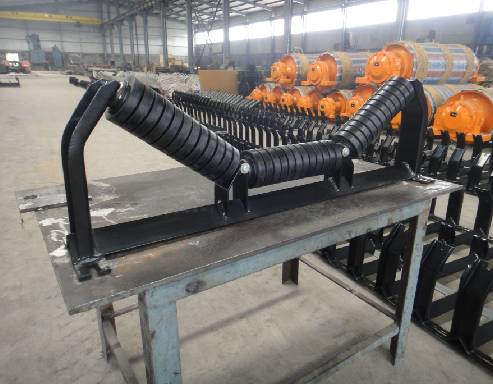 Afrikaans
Afrikaans  Albanian
Albanian  Amharic
Amharic  Arabic
Arabic  Armenian
Armenian  Azerbaijani
Azerbaijani  Basque
Basque  Belarusian
Belarusian  Bengali
Bengali  Bosnian
Bosnian  Bulgarian
Bulgarian  Catalan
Catalan  Cebuano
Cebuano  Corsican
Corsican  Croatian
Croatian  Czech
Czech  Danish
Danish  Dutch
Dutch  English
English  Esperanto
Esperanto  Estonian
Estonian  Finnish
Finnish  French
French  Frisian
Frisian  Galician
Galician  Georgian
Georgian  German
German  Greek
Greek  Gujarati
Gujarati  Haitian Creole
Haitian Creole  hausa
hausa  hawaiian
hawaiian  Hebrew
Hebrew  Hindi
Hindi  Miao
Miao  Hungarian
Hungarian  Icelandic
Icelandic  igbo
igbo  Indonesian
Indonesian  irish
irish  Italian
Italian  Japanese
Japanese  Javanese
Javanese  Kannada
Kannada  kazakh
kazakh  Khmer
Khmer  Rwandese
Rwandese  Korean
Korean  Kurdish
Kurdish  Kyrgyz
Kyrgyz  Lao
Lao  Latin
Latin  Latvian
Latvian  Lithuanian
Lithuanian  Luxembourgish
Luxembourgish  Macedonian
Macedonian  Malgashi
Malgashi  Malay
Malay  Malayalam
Malayalam  Maltese
Maltese  Maori
Maori  Marathi
Marathi  Mongolian
Mongolian  Myanmar
Myanmar  Nepali
Nepali  Norwegian
Norwegian  Norwegian
Norwegian  Occitan
Occitan  Pashto
Pashto  Persian
Persian  Polish
Polish  Portuguese
Portuguese  Punjabi
Punjabi  Romanian
Romanian  Russian
Russian  Samoan
Samoan  Scottish Gaelic
Scottish Gaelic  Serbian
Serbian  Sesotho
Sesotho  Shona
Shona  Sindhi
Sindhi  Sinhala
Sinhala  Slovak
Slovak  Slovenian
Slovenian  Somali
Somali  Spanish
Spanish  Sundanese
Sundanese  Swahili
Swahili  Swedish
Swedish  Tagalog
Tagalog  Tajik
Tajik  Tamil
Tamil  Tatar
Tatar  Telugu
Telugu  Thai
Thai  Turkish
Turkish  Turkmen
Turkmen  Ukrainian
Ukrainian  Urdu
Urdu  Uighur
Uighur  Uzbek
Uzbek  Vietnamese
Vietnamese  Welsh
Welsh  Bantu
Bantu  Yiddish
Yiddish  Yoruba
Yoruba  Zulu
Zulu conveyor idler frames
Understanding Conveyor Idler Frames Essential Components for Efficient Material Handling
Conveyor systems are an integral part of industrial operations, facilitating the smooth transportation of materials across various stages of production, packaging, and warehousing. At the heart of these systems lies an often-overlooked, yet critical component the conveyor idler frame. This article delves into the significance of conveyor idler frames, their design features, and their role in enhancing operational efficiency.
Conveyor idler frames are structural components that support idlers, which are cylindrical rollers that ensure the smooth movement of conveyor belts. These frames are typically made from robust materials such as steel or aluminum, designed to withstand heavy loads and harsh environmental conditions. The idler frames not only support the weight of the materials being transported but also help maintain the proper alignment and tension of the conveyor belt, which is vital for preventing belt slippage and ensuring consistent material flow.
One of the primary functions of the idler frame is to reduce friction as the conveyor carries materials. By providing multiple points of contact through the idlers, the frame minimizes wear and tear on the belt while simultaneously decreasing the energy required for operation. This efficiency translates into lower operational costs, making the choice of a high-quality idler frame a critical consideration for industries that rely heavily on conveyor systems.
conveyor idler frames

The design of conveyor idler frames can vary widely based on the specific requirements of the operation. Common types include flat, tubular, and adjustable frames, each tailored to suit different applications. For instance, flat frames are ideal for standard conveyor systems, while tubular designs are beneficial for heavy-duty applications, providing enhanced support and stability. Adjustable frames offer versatility, allowing operators to modify the frame's height and angle to accommodate varying load sizes and conveyor configurations.
Another essential aspect to consider is the maintenance of idler frames. Regular inspection and upkeep can prolong the lifespan of the frames and the idlers they support. This includes checking for signs of wear and tear, ensuring proper lubrication of rollers, and assessing structural integrity to prevent catastrophic failures that could lead to costly downtime.
In conclusion, conveyor idler frames are vital components that contribute significantly to the efficiency and reliability of conveyor systems. By understanding their design, functionality, and maintenance requirements, industries can optimize their material handling processes, thereby enhancing productivity and reducing operational costs. Whether in manufacturing, mining, or warehousing, investing in quality conveyor idler frames is a step towards a more efficient and effective operation.
-
Trusted Conveyor Solutions from Leading Conveyor Idler Roller ManufacturersNewsJun.27,2025
-
Reliable Return Idler Solutions for Efficient Belt Conveyor SystemsNewsJun.27,2025
-
Precision Conveyor Accessories for Streamlined Material HandlingNewsJun.27,2025
-
High-Quality Belt Conveyor Idler Solutions for Efficient Material HandlingNewsJun.27,2025
-
High-Performance Belt Conveyor Pulleys for Reliable Material HandlingNewsJun.27,2025
-
Enhancing Material Handling EfficiencyNewsJun.27,2025





























